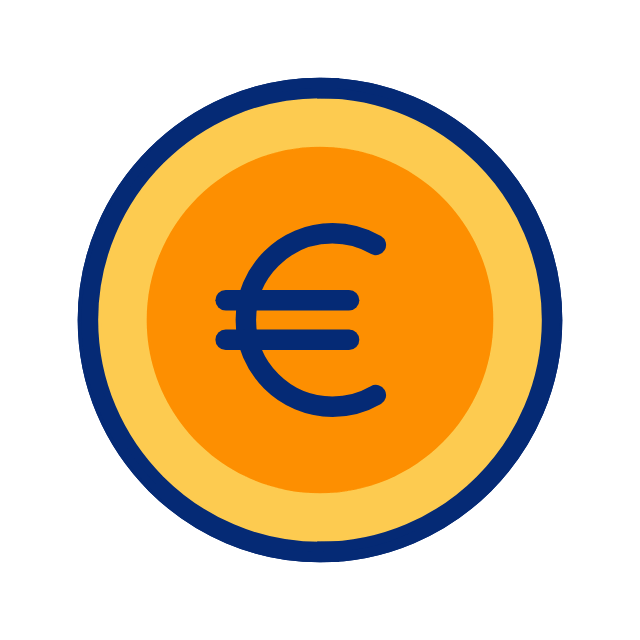What affects the cost of building an online store in 2025?
Reading Time:5 min

More and more companies are thinking about digitally upgrading their business – either by launching a new online store or by redesigning an existing one. But right at the beginning, they often face a question that never has the same answer: “How much will this cost me?”
Although this seems like a simple question, it’s actually similar to asking: “How much does a house cost?”
The price depends on a number of factors:
▶ size,
▶ complexity,
▶ chosen materials and features.
It’s the same with online stores.
This article is not just about numbers. Its goal is to explain what exactly influences the price of an online store – so that you, as a potential client, can understand why some projects cost more, what quality really means, and what’s included in the final quote.
That way, you’ll more easily understand what you need, set realistic expectations – and most importantly: choose the right provider.
1. Scope and Complexity of the Store
The first major factor influencing price is the scope – what exactly should your store offer?
Some businesses only need a basic setup with a few categories and a simple checkout process. Others require much more:
✅ different product types (e.g. color or size variations),
✅ filtering by product attributes,
✅ integration with backend systems (accounting, inventory, ERP),
✅ user accounts, B2B portal,
✅ product configurators, subscription models, or booking systems.
Each of these features means more hours of planning, development, testing, and coordination – and all of that reflects in the price.
👍 A smart practice is to plan your store with future growth in mind – to avoid expensive changes later. That saves money in the long run.
2. Design – Template or Custom?
The design strongly influences your visitors’ first impression. Choosing between a template and custom design affects your budget.
👍 A template allows for faster setup and is more affordable, but less unique. It’s suitable mainly for basic online stores.
👎 Templates often require a paid plugin, and because they are developed by different providers, integration with external systems can sometimes lead to complications.
Buyers compare many options. A professional, clear, and visually polished store can be a deciding factor.
3. Business System Integrations
More and more businesses want their online store connected to systems such as:
✅ ERP,
✅ CRM,
✅ warehouse management,
✅ shipping providers,
✅ payment systems,
✅ fiscal cash registers.
Such integrations require deep system knowledge, technical work, testing, and collaboration with external partners. It's an investment that pays off with automation, fewer errors, and better business control.
4. Payment and Delivery Options
Customers expect choice:
✅ credit cards,
✅ PayPal,
✅ wire transfer,
✅ cash on delivery,
✅ crypto,
✅ Apple Pay, etc.
Each payment method requires separate integration, configuration, testing, and sometimes security certificates.
The same goes for delivery:
✅ Post delivery,
✅ GLS,
✅ DPD,
✅ UPS,
✅ Packeta ...
More options mean more flexibility for customers – but also more development effort.
5. User Experience (UX) and Mobile Responsiveness
Today, a significant share of purchases happens on mobile. Your store must be fast, clear, and easy to use – especially on smartphones.
A smooth buying journey – from product discovery to completed checkout – is essential.
This requires intentional design, testing, and continuous adjustments. A poor user experience results in lost sales.
6. Maintenance, Support and Upgrades
Once the store is launched, the work isn’t over. You need:
✅ regular security updates,
✅ technical support,
✅ system upgrades,
✅ performance and UX improvements.
A reliable partner ensures your store works without interruption and adapts to changes in your business or the market.
7. Project Timeline and Client Involvement
The shorter the deadline, the more people need to work on the project simultaneously – and that raises the cost.
Your involvement is also key:
👍 providing content on time,
👍 making decisions when needed,
👍 giving feedback during development.
Good communication speeds up and improves the result.
8. Type of Provider and Execution Quality
You can hire a freelancer, a low-cost agency, or a specialized team with experience.
A higher price often means:
✅ better processes,
✅ experienced developers,
✅ structured project management,
✅ better support,
✅ and long-term system stability.
Choosing a provider is not just about cost – it’s about trust and making a secure investment.
9. Approximate Pricing Ranges
▶ Basic online store: 5,000 – €10,000 €
(Template-based, few products, basic features)
▶ Mid-level store: 10,000 – 25,000 €
(Custom design, filtering, multiple categories, payment integrations, mobile optimization)
▶ Advanced store: 25,000+ €
(Fully custom, deep integrations, subscription model, configurators, SLA-based support)
Every project is unique. The best approach is an individual assessment based on your business goals.
Conclusion:
The price of an online store is not fixed. It reflects how seriously you approach digital sales and how robust you want your platform to be.
That’s why the first step is always a conversation. Share with us your goals and challenges, and we’ll prepare:
✅ an estimated investment overview,
✅ tailored feature suggestions,
✅ and a clear explanation of what it all means for you.
No obligations, no hidden costs. Just an honest discussion about how we can help your business grow.
Looking for a reliable online store that generates consistent revenue?
Entrust us with your idea or challenge. We'll quickly prepare an estimated investment and recommendations for a successful implementation.
